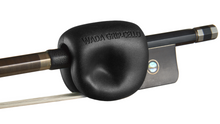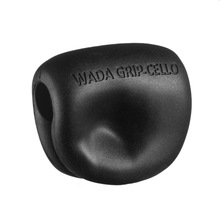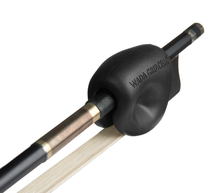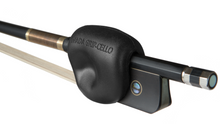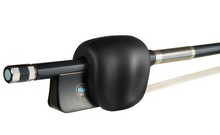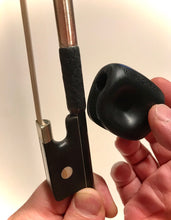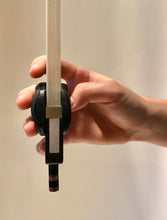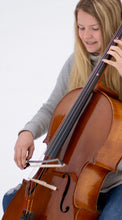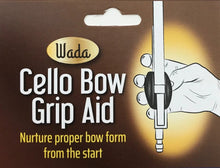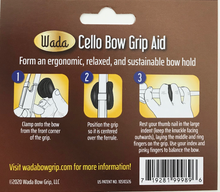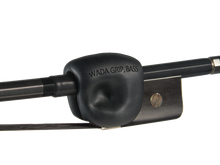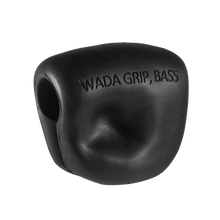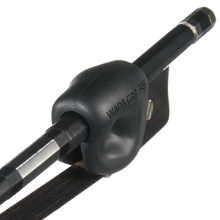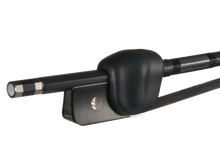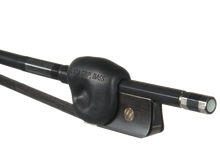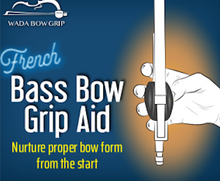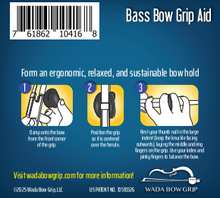
Join us on our journey!
Our breakthrough Cello Bow Grip Aid helps students nurture effective, yet relaxed bow holds. With a malleable, snap-on design, it is fitting for cellists of all ages and sizes. With our grip, you can be sure that every hardworking minute you invest in practicing is spent productively, building good habits.
Join us on this journey, starting every lesson with the perfect bow hold!


Reviews from some cellists!

Voice from Cellist, Ryo Takagi
"Wada Cello Bow Grip Aid helps the fingers position correctly and the weight of the arm can easily settle on the strings. It especially helps reduce tension in the thumb and cellists can hold the bow without unnecessary strain."
~ Ryo Takagi, Cellist, The Orchestra Japan, Tokyo, Japan

Voice from Cellist, Natasha Farny
“Yes! I liked it a lot. I found it particularly useful for teaching the proper placement of the thumb opposite the second finger. The wide grip helps beginners become adjusted to the eventual shape of the bow hold.”
~Natasha Farny, Cellist, Professor at the School of Music at SUNY Fredonia.

Voice from Cellist, Stephanie Chen
"I love how the bow grip is easy to put on and take off, which is great for students! As a cello educator, I think the trickiest part to learning the cello may be the bow hold, but with the WADA bow grip and its spectacular design, it helps decrease the tension in the hand, especially the thumb."
~ Stephanie Chen, Cellist, Educator From Boston, USA

Voice from Cellist, Amit Peled
"Love it. A wonderful invention!"
~Amit Peled, Cellist, Conductor and Pedagogue/Professor at Peabody Institute at John Hopkins University, Baltimore, MD

Voice from Cellist, Amber Walton-Amar
"Wada Cello Bow Grip Aid is a unique and helpful tool for cello teachers! Lightweight and easy to install, it ensures proper placement of thumb and encourages pronation of the bow hand"
~ Amber Walton-Amar, Cellist and Cello Instructor From Toronto, Canada

Voice from Cellist, Tetsuro Komiya
"Wada Cello Bow Grip Aid forms a true bow hold while encouraging careful control and function of each finger. The bow grip maintains the substantive weight and balance of the bow while allowing for a real physical experience, which truly makes this an innovative and phenomenal invention. I strongly recommend this cello bow grip aid to any beginning cellists."
~ Tetsuro Komiya, Cellist, Composer, Arranger and Engineer From Tokyo, Japan

Voice from Cellist, Felipe Avellar de Aquino
“I have experimented the Wada Cello Bow Grip Aid myself as well as with my cello students. I think this is a valuable teaching tool that helps to shape the right hand in a round position, maintaining the pronation of the hand; while keeping the flexibility and suppleness of the fingers and knuckles. Moreover, it does assist in finding the best placement of the thumb in a relaxed and flexible way, which is so essential to help stablishing this complex and sophisticated system that is the right-hand technique.”
~Felipe Avellar de Aquino, Cello Professor at Universidade Federal da Paraíba, Brazil

Voice from Cellist, Kathleen Kemp
"I have adult students who have been helped so much using this bow grip- a few have already been able to transition to a traditional bow grip with a more relaxed hand. I have also used it on beginning students to get them on the bow sooner and with a more physical idea of the grip. They have all since transitioned to a wonderful traditional grip. Thank you WADA!!"
~ Kathleen Kemp, Assistant Principal Cello at Rochester Philharmonic Orchestra/ Faculty of Eastman Summer Cello Institute and Hochstein School of Music and Dance, Rochester, NY

Voice from Cellist, Warrick Dobbie
"Very welcome innovation.....Great device! Wada Cello Bow Grip Aid sets the bow hand in exactly the right shape and gives students something tangible to hang on to while they master their bowing. I really like it. Five stars!!"
“Thanks Wada we love your invention and are very happy to recommend it to our Cello Australia members as a giant leap forward in teaching the cello bow hold”
~ Warrick Dobbie, Cellist, Educator and Founder of "Cello Australia", From Sydney, Australia
A Letter to Teachers and Parents
Rintaro Wada - Cellist, Educator, and Inventor of WADA BOW GRIP
I sincerely wish for your students' success and hope they find a beautiful cello tone with ease, using my invention.
Ergonomically speaking, our hands are better suited to hold spherical shapes rather than the rigidly designed cello/bass bows. Because of this, most of us struggle to hold the bow in a relaxed manner while making music with the instrument. Without stability, it is much harder to produce the deep and rich or soft and angelic tones of the cello.
This bow grip aid allows the bow hand to maintain a round and relaxed hand form while playing. This will help cello learners of all ages understand the mechanics of bow motion easily. In this way, teachers will have more instructional time for areas other than the bow hand.
Wada Bow Grip reduces bow hand/arm muscle strain, but for a successful use of this bow grip aid, please also use traditional methods of bowing instruction in order to obtain flexibility and balance of the thumb, index finger, and pinky. In this manner, the student will be able to maintain a 90 degree angle between the bow and each string with ease. Please also allow the student to sense the physical balance of the bow on the string as shown below.
Balancing the bow on the strings.
The student should sit up high, keep the shoulders leveled to the lowest position at all times.
There are three important sections of the bow on strings:

1. Bow at the Frog
On the string and with the bow at the frog, the bow balance is supported with the pinky, ring finger, and the thumb. The position of the elbow is at the lowest and the position of the wrist is at the highest.

2. Bow at the Balanced Point
On the string and with the bow at the balance point, the bow balance is supported gently with all five fingers.

3. Bow at the Tip
On the string and with the bow at the tip, the bow balance is supported with the index, middle fingers, and thumb. The elbow is at the highest position.
"No Banana Thumb!"
I teach my students to keep their thumb knuckle out (not straight) to start. The thumb will be stretched more at the tip, and bent small at the frog. The problem starts if the thumb is kept straight like a banana. The pinky will also be straighten with the banana thumb and soon, the entire hand will be stiff.
The WADA BOW GRIPS will be easy on and stabilize the thumb, so students will be able to work on a better thumb shape and its movement on the bow while making music.
"Four Elements to Change the Color of the Sound"
At least for the learner, since the bow will be balanced on the string with the arm's weight, I try to avoid talking about "pressure". Rather, I like using these "four essential bowing elements."
1. Bow Position
2. Bow Angle
3. Amount of Bow Hair
Especially at the frog, unlike the violin/viola, cello/bass should use the upper side of the bow hair to balance the bow on the string.
4. Bow Speed
The WADA BOW GRIPS were designed to nurture natural bow hand form by thinking of these four essential elements for bowing.
Wishing your students success in mastering the bow!
Rintaro Wada, Inventor of WADA BOW GRIP










